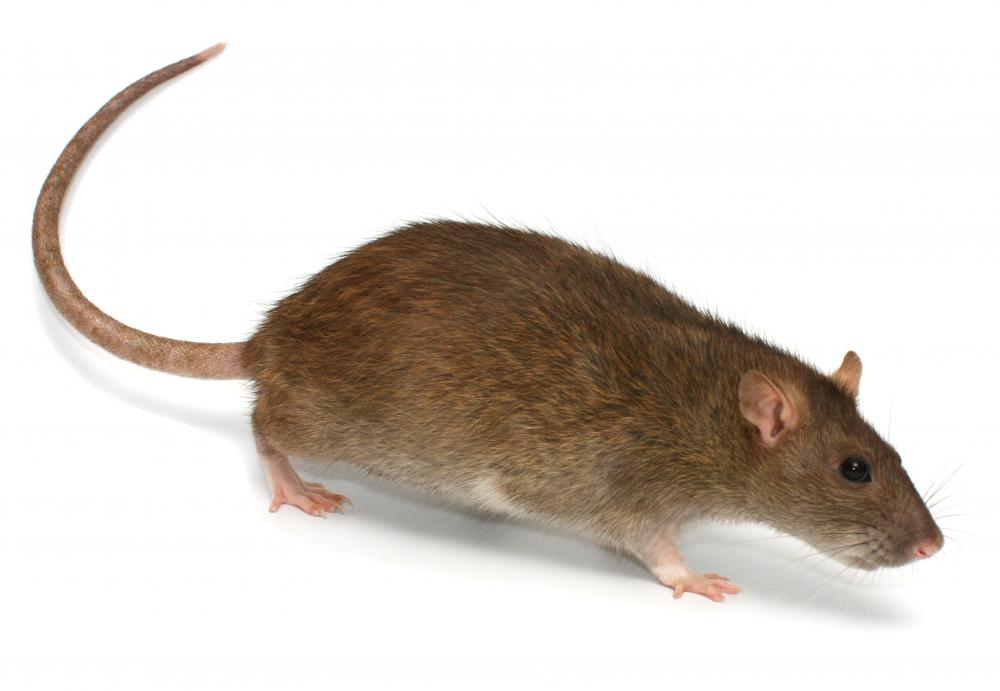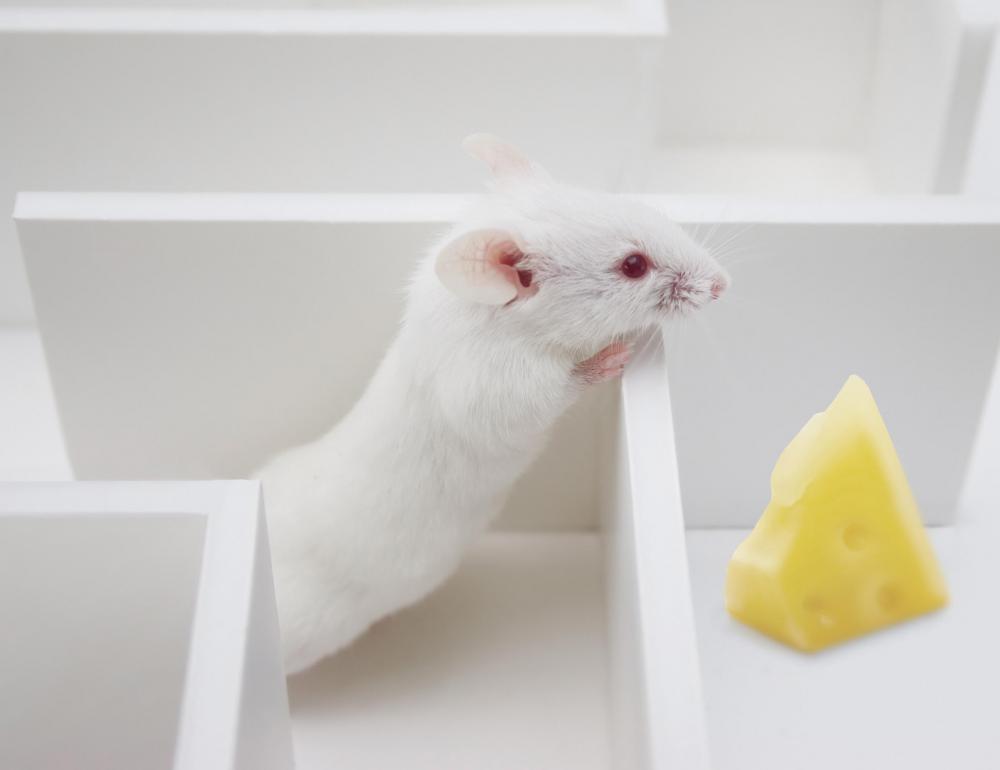At HomeQuestionsAnswered, we're committed to delivering accurate, trustworthy information. Our expert-authored content is rigorously fact-checked and sourced from credible authorities. Discover how we uphold the highest standards in providing you with reliable knowledge.
What are the Different Types of Rat Traps?
Serious rat infestation usually requires an experienced exterminator to effectively deal with the problem, however, for the occasional pest, most people choose to handle the nuisance on their own. Rat traps often solve the problem, and consumers can choose between traps that either kill or capture the rodents. Traps designed to kill rats include snap, electronic, and glue traps. Live traps are designed to simple capture rodents for later release away from the premises.
The most common and widely sold type of rat trap is the standard snap trap. Popularity of these rat traps is probably due to their lower price, because in many ways, these traps are often difficult to use. The traps consist of a block of wood onto which a snapping mechanism is attached. The traps are set with bait attached to a trigger. As the rats nibble the bait, the trigger releases the snapping mechanism, which should break the neck of the rodent.

Snap traps can be baited with most any type of food, but for best results the food should ideally have a strong smell. Recommended baits include hard cheeses, raw bacon, and peanut butter. Bacon works particularly well because the rats tend to tug it as they eat, which helps ensure release of the trigger. Special care should be taken when setting the snapping mechanism. Fingers should be kept beneath the trap at all times, as the trap can easily release while being set.

Glue traps are made of sheets of heavy paper or vinyl that are heavily coated with thick adhesive. The adhesive is mixed with aromatic compounds that lure the rat to the traps. When the rats walk onto the traps, they become mired in the glue, unable to move their feet. While struggling to escape, most rats end up with their faces in the adhesive, which causes them to smother. If the rat does not die during the struggle, it will need to be released or killed.

Electronic rat traps consist of baited boxes that electrocute the rats when they enter. Most of these traps are battery powered and designed to be disposable. It is not necessary to remove the rat from the box. These traps can be purchased in various sizes, to handle either mice or large rats. Electronic rat traps are usually more expensive than other types of kill traps.

Live capture traps are often more expensive than kill traps, but most are designed so they can be used multiple times. Most live capture traps are boxes with glass lids. The glass allows for inspection of the traps without the need to open them. When rodents enter the boxes, a mechanized shutter is released that closes off the entry point, effectively sealing the animal in the box.
AS FEATURED ON:
AS FEATURED ON:














Discussion Comments
@RocketLanch8- I can tell you that rat glue traps aren't much better. My cat has found a few of them, and getting that adhesive out of a cat's fur is a huge chore. If I know there won't be any children or pets in the area, I will still use rat snap traps. The best rat trap bait I've found is peanut butter, but bacon would be my second choice.
My neighbor recommended some humane rat traps he got at a local farmer's co-op. They're mostly metal live rat traps, but some are disposable. The rat can enter one side of the trap to get the bait, but then a door slides down behind him and he can't back out. My biggest concern is where to dispose of the rats once I trap them. I don't want them to become someone else's problem, but I'm not driving 20 miles into the woods just to dispose of a disease-carrying pest.
I really dread using rat snap traps, mostly because I have to deal with the dead rats after the trap goes off. I can handle a lot of disgusting chores, but that one takes the cake. I've also had a few pets discover those traps and really hurt themselves. Those extra large Victor rat traps can easily break a finger if you're not careful. I'd much rather use live rat traps, or at least more humane rat traps.
Post your comments